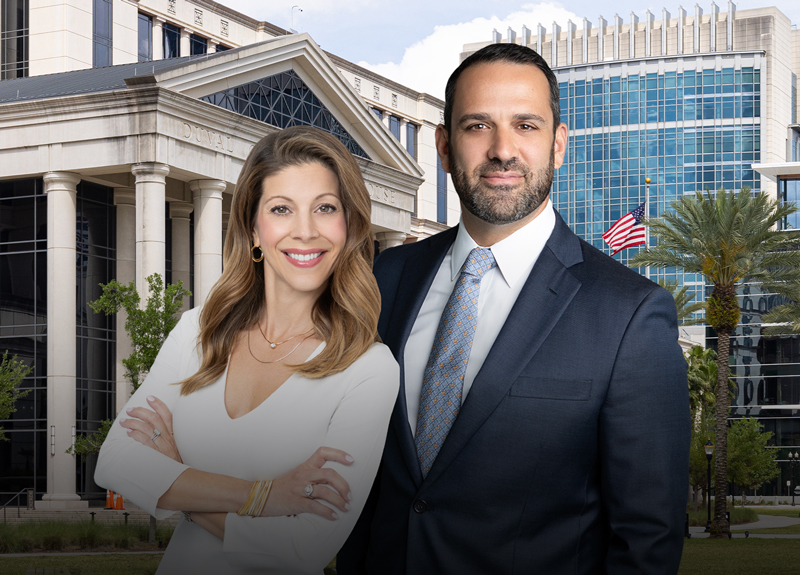Liability in a personal injury case means that a party is financially responsible for the damages sustained by the injured person.
The at-fault party is held legally responsible for their tortious behavior. A tort is conduct that causes another person harm or injury.
Proving liability for a personal injury claim generally involves proving negligence. However, there are other ways to establish liability, such as intentional wrongdoing, strict liability, and vicarious liability.
General Negligence Claims To Establish Liability
Many personal injury cases are based on negligence claims. Examples of claims involving negligent acts include car accidents, premises liability claims, and medical malpractice.
Negligence is the failure to use reasonable care to avoid causing injury or harm. Proving negligence requires you to have evidence establishing:
- A duty of care owed to you by the party who caused your injury
- The at-fault party breached the duty of care through their acts or omissions
- The breach of duty was the direct and proximate cause (causation) of your injuries
- You sustained damages because the other party breached their duty of care
Negligence is based on what a “reasonable person” would do in a situation. Jurors must decide what a person of reasonable prudence would have done given the facts of the case. If the defendant’s actions did not meet that standard of care, the jurors might find the defendant negligent.
However, you must still prove that the negligent conduct caused your injury and resulted in damages to receive compensation for damages.
Intentional Acts Can Create Liability
A person can be held legally responsible for damages if they intentionally caused another person harm. Examples of intentional torts include:
- Assault
- Rape and sexual assault
- Arson
- Murder
You must prove that the person acted with the intent of causing your harm. If you cannot establish intent, you might not win your personal injury claim based on intentional torts.
Strict Liability Claims
Strict liability is similar to negligence. However, intent and negligence are not required elements that you must prove to establish strict liability. Instead, you must have evidence proving that the at-fault party caused your injury and you sustained damages because of that injury.
Examples of personal injury cases involving strict liability include:
- Defective Products – Manufacturers and other parties can be held liable for damages if a defective product causes harm or injury to a person.
- Dog Bites – Florida dog bite laws hold owners strictly liable when their dog bites another person. Strict liability may not apply in all cases, such as when you provoke a dog or you are trespassing.
- Abnormally Dangerous Activities – An abnormally dangerous activity poses a high risk of injury or death even though the party takes reasonable steps to avoid injury.
Proving strict liability might seem straightforward. However, these cases can involve complicated issues and legal theories. There could be other factors that might result in a negligence claim in addition to strict liability claims.
Vicarious Liability Claims
Generally, only the parties whose conduct caused a person’s injuries are financially liable for damages. However, under the legal theory of vicarious liability, a party could be held liable for another party’s torts if that party exercised a management role.
Vicarious liability is used to hold employers liable for the negligent conduct of their employees. For the employer to be liable, the employee must have been acting within their normal scope of employment at the time of the injury.
How Does Florida’s Contributory Fault Law Impact Liability Claims?
An at-fault party can be held liable for your economic and non-economic damages. In some cases, a court could grant punitive damages when the defendant’s conduct was grossly negligent or intentional.
If the at-fault party has liability insurance that covers the accident or incident, the insurance company will handle your injury claim. If the party does not have liability insurance, you would need to sue the person to hold them personally liable for your damages.
However, Florida’s contributory fault laws can change the percentage of liability an at-fault party has for damages.
If an injured person contributes to the cause of their injury, it does not bar the person from recovering compensation for damages from the party who caused their injury. However, the injured person’s fault is considered when allocating damages.
The at-fault party is only responsible for the percentage of damages that equals their percentage of fault. Therefore, if another driver is 65% at fault for the cause of your car crash, you would only receive compensation for 65% of your damages.
In other words, your compensation is reduced by 35% because you are roughly one-third responsible for causing the car accident.
Contact Us for a Free Consultation With a Personal Injury Lawyer
Proving liability can be challenging in a personal injury case. Our personal injury attorneys have the experience, skills, and resources to conduct thorough investigations to gather evidence establishing liability.
Call today at (904) 396-1100 or contact us online for your free case evaluation with an attorney from Baggett Law Personal Injury Lawyers.

